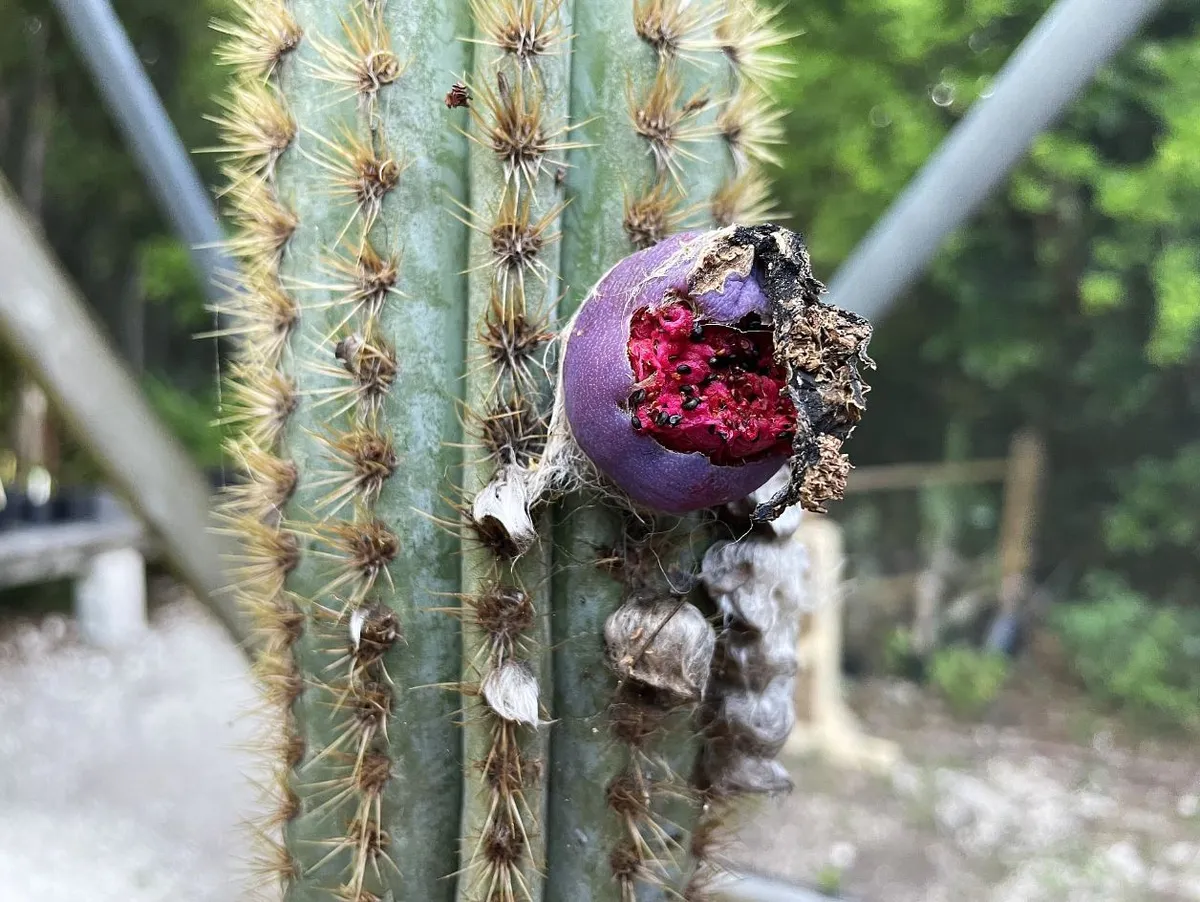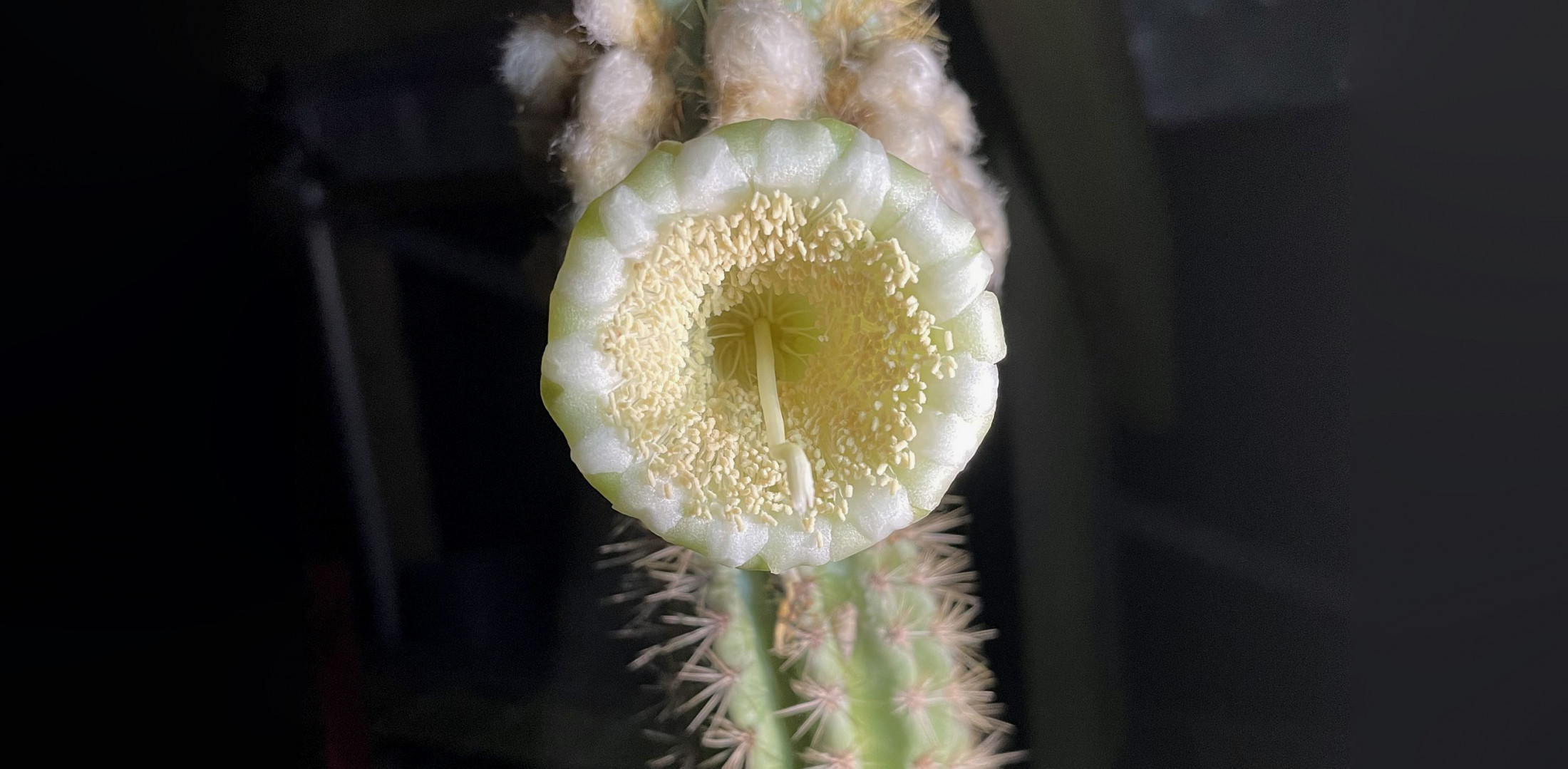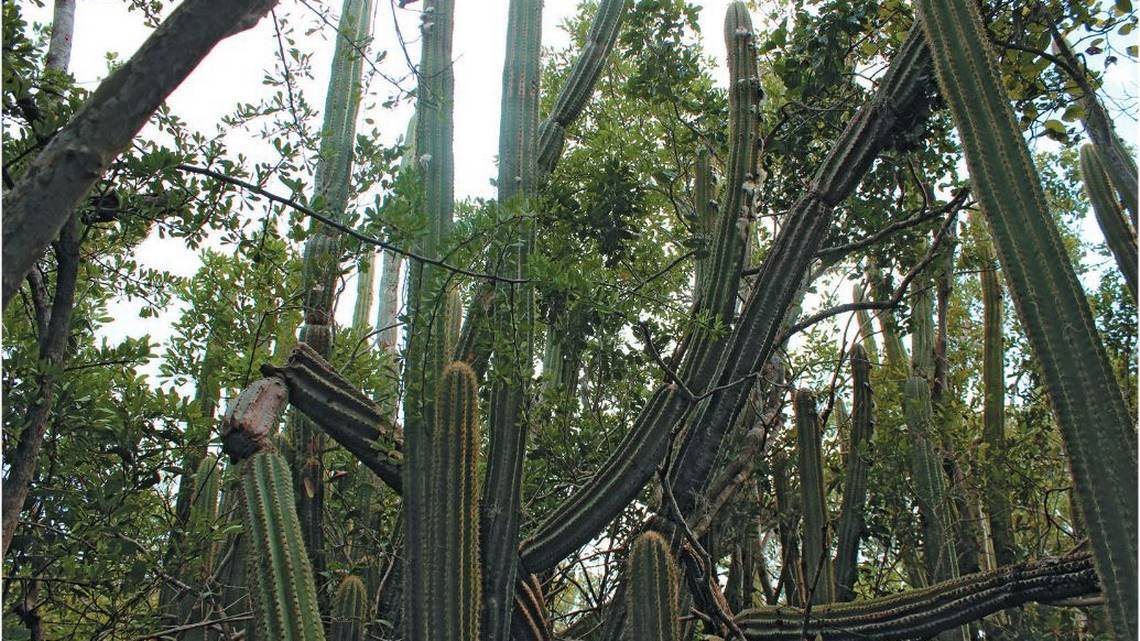Key Largo has become home to a unique yet disturbing graveyard, where no headstones, burial markers, names, or bodies are found. Instead, this site marks the last known location of the incredibly rare Key Largo tree cactus (Pilosocereus millspaughii), which was last seen alive in 2023. A newly published paper attributes the extinction of this cactus to climate change.
Scientists have been monitoring this stand of cacti since the 1990s, noting its distinct features like its height (up to 20 feet) and the brown, hairlike puffball it grows around its flowers. This two-acre patch in John Pennekamp State Park was the only U.S. population of this cactus, an offshoot from the larger Caribbean population. By last year, however, the entire stand had disappeared.
Researchers believe that rising sea levels, which led to soil salinization, were the main reason for the local extinction of the Key Largo tree cactus. This event could mark the first climate-driven species extinction in the United States.
James Lange, lead botanist with Fairchild Tropical Botanical Gardens and co-author of the study published in the Journal of the Botanical Research Institute of Texas, expressed the tragedy of losing such a unique plant that contributed to the uniqueness of the Keys. The researchers had witnessed the gradual decline of these cacti, which were ultimately overwhelmed by the encroaching salty waters.

The Key Largo tree cactus might be the first recorded species in the U.S. to go extinct due to sea level rise, but many other species in the area face similar threats. For example, the endangered silver rice rat has been shifting its population to higher elevations in response to rising tides.
A study tracked these movements over 17 years, highlighting the impact of climate change on the species’ habitat. Another study in 1976 by Taylor Alexander from the University of Miami pointed out that sea level rise had made the soil too salty for slash pines to survive on Key Largo.
George Gann, executive director at the Institute for Regional Conservation and co-author of the recent study, emphasized the importance of these findings as both a warning and an opportunity.
He noted that the loss of the Key Largo tree cactus serves as a stark reminder of the broader impacts of climate change and the need for collaborative efforts to protect threatened species and work towards ecological restoration. The demise of the cactus is a call to action to prevent further species loss and to develop strategies to mitigate the effects of climate change.
The decline of the Key Largo tree cactus began to be more closely monitored around 2007, after it had already survived multiple hurricanes, including those in 2005. By 2015, the population was dwindling, with only 60 plants recorded that year, down from previous counts.
By 2016, only 28 remained, with many showing signs of being eaten by animals possibly due to the scarcity of freshwater sources caused by high tides. The decline continued, with Hurricane Irma in 2017 delivering a critical blow with 1.5 feet of storm surge. By 2019, the cactus population was nearly extinct, with salty king tides encroaching on their habitat.

In response to the declining cactus population, scientists took action to save what they could. They collected cuttings, seeds, and seedlings from the remaining plants. Currently, these survivors are being cultivated at Fairchild Gardens and John Pennekamp State Park.
However, despite these efforts, the species could not be revived in its original location. Last year, researchers found a single surviving cactus and relocated it to a nursery for better chances of survival.
The threats to these species extend beyond gradual sea level rise to include “pulse events” such as king tides and hurricane storm surges, which have become more frequent and severe. George Gann explained that these rapid changes do not allow for the gradual shift in habitats that barrier islands used to experience.
Instead, they cause dramatic transformations that challenge the survival of local flora and fauna. The goal now is to find suitable areas in Key Largo to replant the salvaged cacti fragments, potentially extending the species’ survival for several more years.
Finding suitable new habitats for the replanting efforts is challenging but not impossible. Alan Franck, collections manager for the Florida Museum of Natural History and co-author of the study, noted the difficulty in identifying places where plants not previously present can thrive.
Despite these challenges, the ongoing efforts to cultivate and eventually replant the Key Largo tree cactus fragments aim to buy time for the species, highlighting the critical need for continued conservation and restoration efforts in the face of climate change.

